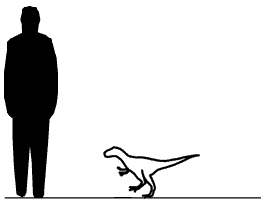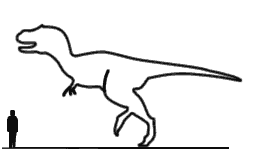
October 14, 2009
Within cryptozoology, several lines of thought revolve around using fossil forms as possible candidates for what cryptids might be. Within the study of fossils, however, there is a cautionary tale evolving about what at first glance seems so obvious one wonders why it has not been considered earlier. The new theory emerging is that some of the smaller dinosaur species may merely be the young of larger adult forms.
Brian Handwerk pens a good overview of the new theory for National Geographic News, of which below is a selection.
Many dinosaurs may be facing a new kind of extinction—a controversial theory suggests as many as a third of all known dinosaur species never existed in the first place.
That’s because young dinosaurs didn’t look like Mini-Me versions of their parents, according to new analyses by paleontologists Mark Goodwin, University of California, Berkeley, and Jack Horner, of Montana State University.
Instead, like birds and some other living animals, the juveniles went through dramatic physical changes during adulthood.
This means many fossils of young dinosaurs, including T. rex relatives, have been misidentified as unique species, the researchers argue.
How T. Rex Became a Terror
The lean and graceful Nanotyrannus is one strong example. Thought to be a smaller relative of T. rex, the supposed species is now considered by many experts to be based on a misidentified fossil of a juvenile T. rex.

Nanotyrannus shown in scale to the typical 6 ft tall Homo sapiens (often seen in height charts).
The purported Nanotyrannus fossils have the look of a teenage T. rex, Horner said in the new documentary. That’s because T. rex’s skull changed dramatically as it grew, he said.
The skull morphed from an elongated shape to the more familiar, short snout and jaw, which could take in large quantities of food.
But the smoking gun, Horner said, was the discovery of a dinosaur between the size of an adult T. rex and Nanotyrannus.
Nanotyrannus—actually a young T. rex in Horner’s view—had 17 lower-jaw teeth, and an adult T. rex had 12.

Tyrannosaurus rex shown in scale to the typical 6 ft tall Homo sapiens.
The midsize dinosaur had 14 lower-jaw teeth—suggesting that it was also a young T. rex, and that tyrannosaurs gradually traded their smaller, blade-like teeth for fewer bone-crushing grinders in adulthood.
* * *
Birds of a Feather
Clues to why dinosaurs underwent such dramatic physical changes may be found in their closest living relatives—birds experts say.
Hornbills, for example, don’t sport their distinctive helmet-like head casque (see hornbill picture – at top) until they are about three-quarters grown.
Like deer antlers, the casque helps other animals discern between mature adults and juveniles.
In the same way, dinosaurs’ changing appearances might have also promoted visual communication.
For example head knobs or horns, likely paired with color variations, may have created unmistakable visual displays that made sure members of a species recognized one another.
They may also have identified dinosaurs as male or female and marked them as mate-seeking breeders or juveniles in need of protection.
* * *

This specific height chart design is by Snorg Tees.
About Loren Coleman
Loren Coleman is one of the world’s leading cryptozoologists, some say “the” leading living cryptozoologist. Certainly, he is acknowledged as the current living American researcher and writer who has most popularized cryptozoology in the late 20th and early 21st centuries.
Starting his fieldwork and investigations in 1960, after traveling and trekking extensively in pursuit of cryptozoological mysteries, Coleman began writing to share his experiences in 1969. An honorary member of Ivan T. Sanderson’s Society for the Investigation of the Unexplained in the 1970s, Coleman has been bestowed with similar honorary memberships of the North Idaho College Cryptozoology Club in 1983, and in subsequent years, that of the British Columbia Scientific Cryptozoology Club, CryptoSafari International, and other international organizations. He was also a Life Member and Benefactor of the International Society of Cryptozoology (now-defunct).
Loren Coleman’s daily blog, as a member of the Cryptomundo Team, served as an ongoing avenue of communication for the ever-growing body of cryptozoo news from 2005 through 2013. He returned as an infrequent contributor beginning Halloween week of 2015.
Coleman is the founder in 2003, and current director of the International Cryptozoology Museum in Portland, Maine.
Filed under CryptoZoo News, Extinct, Fossil Finds